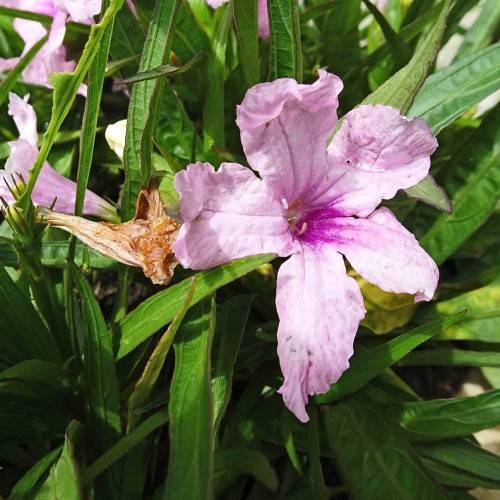
Mexican petunia
Ruellia brittoniana
Cycle:
Perennial
Watering:
Average
Hardiness Zone:
7
Flowers:
Flowers In Summer
Sun:
Full sun
Soil:
Well-drained
Fruits:
Fruits In Summer Ready In
Edible:
Yes
Leaf:
Yes
Growth Rate:
High
Care Level:
Medium
watering
Boysenberries (Rubus ursinus x idaeus) should be watered about every 7-10 days. When watering, it's important to saturate the soil around the roots, but not too much that the soil becomes waterlogged. Boysenberry plants prefer a soil with good drainage, so a thick layer of mulch around the plant's root system should be added to help protect from waterlogged soils and control weeds. In hot and dry climates, your Boysenberry plant may require more frequent watering during the hot summer months. In winter months, water sparingly as the plants become dormant.
sunlight
Boysenberries (Rubus ursinus x idaeus) should be planted in full sun for about 8 to 10 hours of direct sunlight per day. Boysenberry plants prefer moist, well-drained soil and should be watered regularly while their fruits are ripening. In sheltered areas, they should be provided partial shade from hot afternoon sun. High temperatures can cause the flowers and fruit to suffer from sunburn. During the blooming season, mulching the soil to conserve moisture can be beneficial.
pruning
The best time to prune boysenberry plants is in late winter or early spring before the buds begin to burst. The amount of pruning should be kept to a minimum, as boysenberries produce the most fruit on their more mature canes. Depending on the size of the plant and the age of the canes, it may be necessary to prune the old canes back to the ground each year, and to prune the younger canes down to about 5-7 feet. Additionally, any dead or diseased growth should be removed to help maintain healthy canes.
